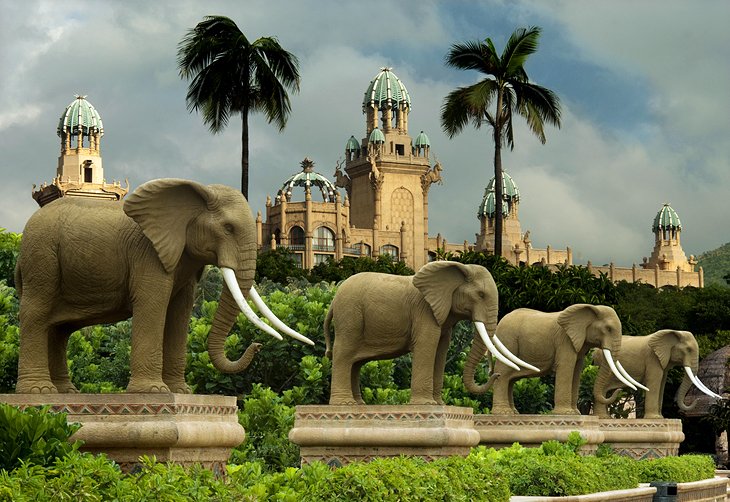6 Simple Techniques For Johannesburg North Attractions
6 Simple Techniques For Johannesburg North Attractions
Blog Article
All about Johannesburg North Attractions
Table of ContentsThe Johannesburg North Attractions StatementsThe Johannesburg North Attractions PDFsIndicators on Johannesburg North Attractions You Should KnowThe Best Guide To Johannesburg North AttractionsTop Guidelines Of Johannesburg North AttractionsThe Facts About Johannesburg North Attractions Revealed
The city grew on the edge of the Witwatersrand Key Reef, a below ground stratum of gold-bearing quartz-silica conglomerate that arcs for hundreds of miles beneath the Highveld - Johannesburg North attractions. Most of the gold mines in the city ceased operation in the 1970s, but in its day the Witwatersrand gold industry accounted for more than 40 percent of the world's yearly gold manufacturing.Johannesburg has a warm environment. Summer season temperatures balance regarding 75 F (24 C); wintertime temperatures average regarding 55 F (13 C) and just sometimes dip listed below freezing. The city enjoys about eight hours of sunshine daily in both winter months and summer season. Rain standards regarding 28 inches (700 millimetres) per annum, but the total differs substantially from year to year.
What rain the city obtains drops practically specifically in the summer season months, often in magnificent late-afternoon electric storms. Air pollution postures a substantial issue, especially in the winter months, when thermal inversions hamper the westward flow of air from the Indian Ocean. Pollution is most extreme in the largely cleared up Black towns on the city's perimeter, where lots of locals still count on coal for fuel.

Examine This Report on Johannesburg North Attractions
The balance of the city is occupied by whites. Lodging varies in character and quality. Soweto is well-known for its countless rows of municipally built, two-room matchbox homes, yet it also has a couple of flourishing territories along with brimming squatter camps, where 10s of thousands live without water, electrical energy, or hygiene centers.
Physical growth, although rather limited by transport, continued promptly as immigration to South Africa, and Johannesburg specifically, raised significantly. This issue was resolved in the 1930s when the auto was introduced in mass manufacturing to South Africa. Cars were, for the most part, constrained to the rich, and allowed them to relocate to the north of the city and commute into the centre.
A lot of inadequate suburbs were combined, with inadequate blacks and whites cohabiting, although the rich suburban areas were usually scheduled for whites. This transformed with the political election of the National Party in the 1948 elections, that began to formalise the system called discrimination. Apartheid officially designated which suburbs each race might reside in under the Group Areas Act.
The previous system of eleven numbered regions was reorganised in 2006. Marshalltown, as seen from the top of the Carlton Centre. The M1 and M2 run behind the buildings, and the southern residential areas expand past the highway border. The central city of Johannesburg is located within the city's Region F. The number of people living in the internal city on an informal basis is unidentified, as several are unlawful immigrants. The unemployment, education, and age accounts of the location are all unidentified, due to the trouble go to website of getting reliable information regarding the area.
The Basic Principles Of Johannesburg North Attractions
Yeoville and Bellevue have a mix of home structures and solitary household units on small great deals. The area lies on a hilly divide that ranges from east to west. The most noticeable geographic function is Observatory Ridge, which is additional reading called for the large observatory situated on it. The leisure spaces are no longer made use of, due to safety issues.

Get This Report on Johannesburg North Attractions
The eastern suburban areas are some of the oldest areas of Johannesburg, there like it are big communities of Jewish and various other European histories, the majority of the population is English talking. There are 3 golf training courses as well as a number of protected ridges with viewsites.
The area is mostly composed of old "matchbox" houses, or four-room houses built by the government, that were built to supply economical lodging for black employees throughout apartheid. Soweto is an abbreviation, representing "South Western Townships". Road after street in this location is lined with matchboxes; however, there are a couple of smaller areas where flourishing Sowetans have constructed residences that are more similar in stature with those in more upscale residential areas.
Hostels are another popular physical feature of Soweto. Initially constructed to house male migrant employees, several have actually been boosted as dwellings for couples and households. The N1 Western Bypass skirts the eastern limit of Soweto. The suburban area was not historically permitted to produce work centres within the area, so mostly all of its residents are commuters to various other parts of the city.
9 Simple Techniques For Johannesburg North Attractions
The household areas in the northern residential areas are primarily formal, with no substantial areas of informal real estate, or housing that lacks an irreversible framework. This is a well-known location, there is a trend of land usage change from household to industrial, particularly along primary arterial roads and around recognized nodes.
Roads to the east and west are less well created, as there are no highways travelling in that instructions. Towards the north border of the city, the thickness of growth reduces, leaving large locations of untaught land around Midrand.
The 9-Second Trick For Johannesburg North Attractions
, which is located on a hillside ignoring the internal city and Hillbrow.
Report this page